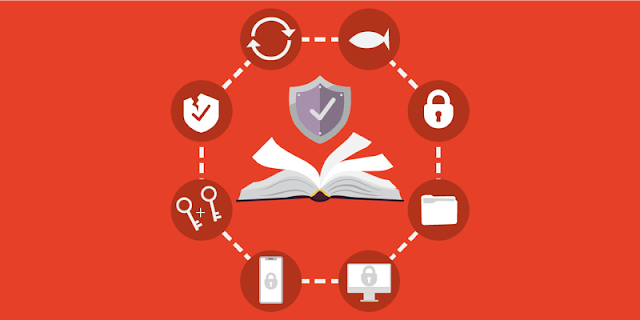How to Conduct an Internal Cybersecurity Awareness Challenge
In today’s digital-first business environment, human error remains one of the top causes of security breaches. While companies invest heavily in firewalls, antivirus software, and intrusion detection systems, they often overlook the weakest link—employees. To bridge this gap, organizations are increasingly launching internal cybersecurity awareness challenges to make learning both engaging and effective. If you’re in the IT or security field and want to spearhead such initiatives, enrolling in a Cyber Security Course in Bengaluru can equip you with the necessary skills and frameworks.
Why Cybersecurity Awareness Challenges Matter
Every day, employees face phishing emails, social engineering attempts, weak password habits, and more. A typical PowerPoint presentation or once-a-year training session won’t create lasting change. However, gamified cybersecurity challenges turn learning into an interactive experience, leading to better knowledge retention and behavior change.
Cybersecurity awareness challenges:
-
Make security training fun and competitive
-
Foster a culture of accountability and awareness
-
Help identify knowledge gaps in real time
-
Encourage continuous learning and proactive behavior
Step-by-Step Guide to Running an Internal Cybersecurity Awareness Challenge
Let’s break down the process of launching and managing an internal cybersecurity challenge effectively:
Step 1: Define Clear Goals
Before you begin, determine what you want to achieve:
-
Reduce phishing click-through rates?
-
Test password hygiene?
-
Increase reporting of suspicious activity?
-
General awareness across all departments?
Setting measurable goals allows you to track progress and ROI.
Step 2: Identify Target Audience
Decide whether your challenge will involve the entire company or be department-specific. You might want to run separate tracks for:
-
General staff (non-technical)
-
IT professionals
-
Executives and high-risk personnel
Customizing content for different user types makes the training more relevant and impactful.
Step 3: Design the Challenge Format
Choose a format that matches your goals and workplace culture. Here are a few options:
-
Phishing Simulation: Send realistic fake phishing emails to test how many employees fall for them and how many report them.
-
Cyber Quiz Tournament: Create multiple-choice quizzes on topics like safe browsing, email threats, and mobile security.
-
Capture the Flag (CTF): Host mini-challenges where participants find vulnerabilities in code or systems.
-
Scavenger Hunt: Hide cybersecurity clues in company documents, intranet pages, or internal tools.
Using these formats encourages participation and increases learning retention.
Step 4: Develop Engaging Content
Create content that reflects real-world threats your organization faces. Examples include:
-
Emails mimicking internal HR or IT communications
-
Scenarios involving suspicious USB devices
-
Password cracking challenges using weak credentials
Make sure the difficulty levels vary to cater to both beginners and more tech-savvy participants.
Midway through the challenge, it’s a good idea to offer additional learning resources to deepen participants' knowledge. This is where Ethical Hacking Courses in Bengaluru come in handy. These courses are not only great for IT teams but can also help interested employees get hands-on with threat modeling, penetration testing, and security audits—building a pipeline of in-house cybersecurity talent.
Step 5: Promote the Challenge Internally
Drive participation with effective internal marketing:
-
Send teaser emails
-
Put up posters around the office
-
Use company-wide Slack/Teams channels
-
Offer early sign-up bonuses
Consider incentivizing the challenge with prizes like tech gadgets, certificates, or even a “Cyber Hero of the Month” title.
Step 6: Launch and Monitor
Kick off the challenge with clear instructions. Use a dashboard or internal portal to:
-
Track progress
-
Display leaderboards
-
Provide real-time feedback
Gamification elements such as badges, timers, and scores keep participants engaged and encourage healthy competition.
Step 7: Measure Results
Post-challenge, analyze the data:
-
What percentage of employees clicked on phishing simulations?
-
How many reported the emails?
-
Who scored the highest in quizzes?
-
Which departments need more training?
Use this data to improve future training sessions and personalize awareness programs.
Step 8: Offer Recognition and Rewards
Celebrate participants’ efforts:
-
Give certificates to top performers
-
Share success stories in company newsletters
-
Highlight winners in team meetings
Recognizing cybersecurity champions helps promote long-term cultural change and encourages more employees to take security seriously.
Tools and Platforms to Use
You don’t have to build everything from scratch. Here are some platforms that can support your cybersecurity awareness challenge:
-
KnowBe4 – Excellent for phishing simulations and compliance training
-
Cynet – Offers behavioral analytics and customizable simulations
-
Hack The Box – Ideal for advanced users and red team activities
-
Kahoot or Quizizz – Great for fun, quiz-based tournaments
Common Mistakes to Avoid
-
Making it too difficult: Overly technical challenges can discourage participation.
-
No follow-up: Always review results and offer feedback after the event.
-
Lack of buy-in from leadership: Get executives to participate or endorse the challenge.
-
Ignoring non-tech employees: Cybersecurity is everyone’s responsibility.
Long-Term Strategy: Build a Security-First Culture
An internal awareness challenge shouldn’t be a one-time event. To build a security-first culture:
-
Run quarterly mini-challenges
-
Celebrate Cybersecurity Awareness Month (October) with a themed challenge
-
Embed security practices into onboarding
-
Encourage ongoing learning through courses, including advanced topics like penetration testing or malware analysis
You can even offer company-sponsored enrollment in an Ethical Hacking Course in Bengaluru for employees who show an interest in IT security. Not only does this upskill your workforce, but it also increases internal defense capabilities without the need for external consultants.
Final Thoughts
Conducting an internal cybersecurity awareness challenge is one of the most effective ways to build a vigilant workforce. By making training interactive and competitive, you encourage employees to think like attackers and respond like defenders. Whether you're an HR leader, IT manager, or a security enthusiast, taking the initiative to organize such a challenge can drastically improve your organization’s security posture.
And if you’re serious about advancing your knowledge, enrolling in a Cyber Security Course in Bengaluru will give you the skills needed to lead these initiatives with confidence.




Comments
Post a Comment